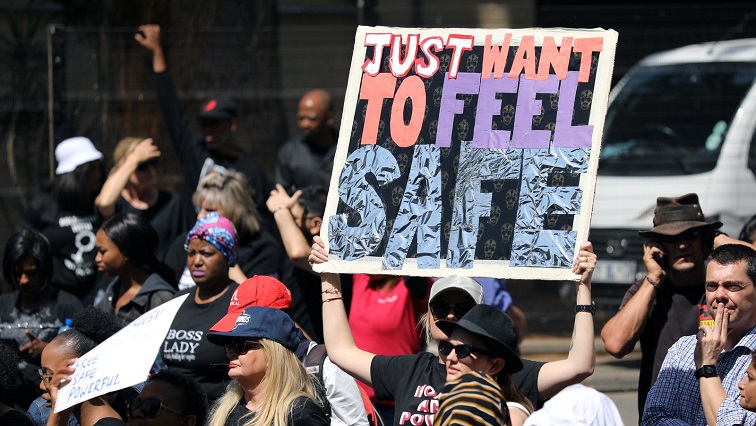The recent launch of a review report by the Commission for Gender Equality (CGE), indicating general failure of the country’s Emergency Response Action Plan (ERAP), should ideally trigger a much needed public introspection on why, all too often, we churn out an impressive array of strategies, plans and programs of action that often flounder at the point of implementation and service delivery, writes Dr. Thabo Rapoo, Research Director at the Commission for Gender Equality.
The review report launched by the Commission revealed that almost 64% of the 81 targets set to be achieved within the six months lifespan of the ERAP initiative were not achieved. This is not insignificant, especially for such a high profile and widely publicised national initiative, announced by President Ramaphosa in Parliament in September 2019, to widespread acclaim not only within the gender sector but also among members of the public.
The ERAP initiative was a much-needed national emergency response that was conceived and planned jointly by representatives from government and key gender/civic organizations with a singular purpose of collectively guiding the country towards an effective response to the scourge of gender-based violence, particularly brutal violence against women, girls and children. Its proclamation by the President was symbolic of the political commitment expected at that time from the highest office in the land to offer a response to what was essentially a national crisis following a number of high profile incidents of femicide, most notably the killing of Uyinene Mrwetyana whose body was found on 2nd September 2019.
The failure of the ERAP initiative highlights some of the key (and well-known) technical and administrative challenges that tend to undermine many important government initiatives in South Africa. These include poor planning, limited or ineffective allocation and/or management of resources, weak institutional capacity for implementation, as well as (and crucially), ineffective coordination and poor inter-agency collaboration when it comes to implementing multi-sectoral programmes of action, especially when such coordination and collaboration are an absolute pre-requisite for success. However, it would be wrong and wholly unjustifiable to suggest that the causes of policy failure are embedded only within implementation processes, especially at the feet of street-level bureaucrats.
The conceptualization and design of policies and programs of action at the highest levels of policymaking within the state is often itself a site of protracted conflicts and struggles among key interest groups, where the outcomes are often policies and programs that are essentially muddled compromises intended to reconcile conflicting interests. While such compromises are often aimed at achieving political consensus over broad policy objectives and goals, thus overcoming short-term opposition from powerful interest groups, in practice such outcomes become a nightmare for administrators to manage and implement effectively. This is even more so when such initiatives are multi-sectoral, demanding effective cross-sectoral and inter-agency collaboration and cooperation in planning, resource allocation and execution.
While the ERAP initiative was politically desirable as an urgent response to a crisis of gender-based violence, its five thematic areas were in essence a mixture of both short-term and long-term goals, especially where the latter could not realistically be achieved within the six months time period allotted to this initiative. For instance, key aspects and targets under thematic areas 1 and 3 (i.e. Access to Justice for victims and survivors, and urgently respond to victims of GBV) could realistically be achieved within the allocated six months period, provided that effective planning, resource allocation and inter-agency collaboration were secured. However, the other three thematic areas – (i.e. Change norms and behaviour through high-level prevention efforts; Strengthen accountability architecture to adequately respond to the scourge of GBV; Prioritise interventions that facilitate economic opportunities to address women’s economic empowerment) were largely long term goals that could not possibly be sufficiently achieved within a six months period of time.
This underlying tension between short and long-term goals, including an unrealistically short time-frame for implementation rendered planning difficult and served as one of the key weaknesses that contributed immensely to implementation problems and limited target achievement rate. It is clear that the outcome of the planning of this initiative reflects an awkward mixture of idealism and some realism from those responsible for designing and developing this initiative. The role players were a mixture of government officials and activists from civic organisations with differing perspectives and understanding of what could realistically be achieved in six months. Also, due to the high-profile nature of this initiative and the pressured environment within which it was conceived and developed, there was evidently insufficient time for effective planning for implementation. Sufficient time for planning would have allowed for a thorough assessment of available institutional capacity, resources as well as for securing buy-in from many of the 22 national government departments that were identified to take part in the implementation of this initiative.
Moreover, the timing of the rolling out of this initiative (in October 2019) was right in the middle of the government financial year, and therefore likely to have come at a time when many government departments were already fully committed to their annual expenditure plans and time-frames. In other words, the ERAP initiative would have been considerable disruption to the existing departmental annual operational and expenditure plans and would have therefore needed a high-level political/ministerial structure to overcome the inevitable bureaucratic inertia in the face of such an emergency initiative, and to secure a place within the operational plans of many national government departments in the middle of the financial year. In addition, there was no evidence that the Treasury played any significant role in the design, development and costing of the ERAP initiative. A limited role for such a critical state institution, in such a large-scale government expenditure commitment, was a plan for failure.
These are some of the key factors that explain the limited success of the ERAP initiative. – By Dr. Thabo Rapoo, Research Director at Commission for Gender Equality
*Views expressed in this article do not necessarily reflect those of the CGE






